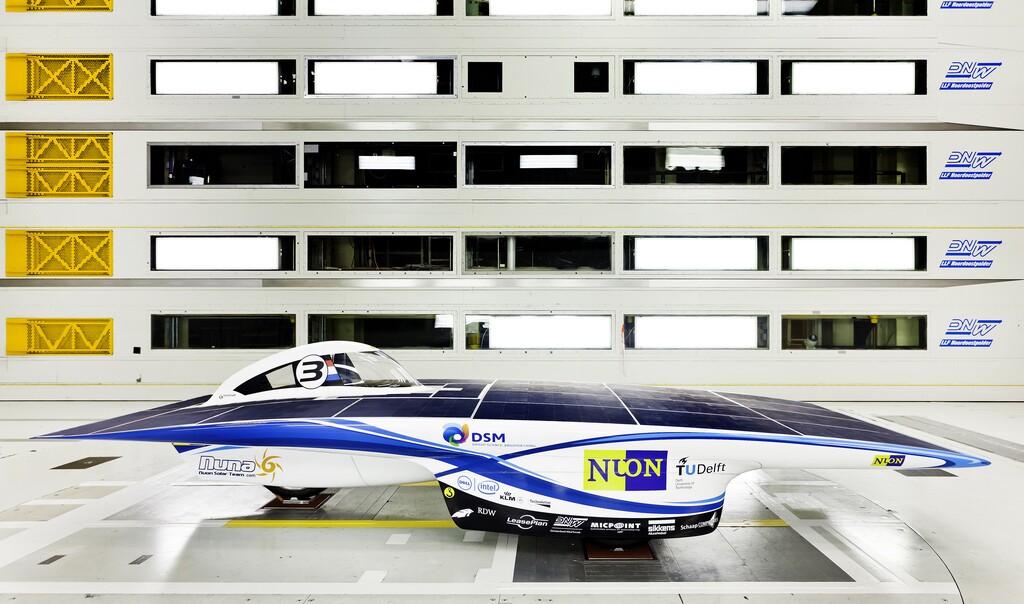The Nuon Solar Team has revealed its lightest solar powered vehicle yet. Not only is the 145 kg (320 lbs) Nuna6 around 15 kg (33 lbs) lighter than its predecessor Nuna5 and half the weight of the original Nuna which competed in 2001, it is also 40 cm (15 inches) shorter and has 10 percent less air resistance. This month's unveiling comes as the team of students from the Delft University of Technology in the Netherlands prepares for a tilt at victory in the 2011 World Solar Challenge - a biennial 1800 mile race through the heart of Australia that has become one of the world's premiere showcases for these incredibly efficient vehicles and the technologies that underpin them.
Nuon Solar reigned supreme in the World Solar Challenge throughout the noughties, winning four consecutive challenges from 2001 before being pipped by the team from Tokai University in the 2009 race. Nuna5 achieved an average speed 91.88 km/h (58 mph) in 2009 while Tokai University (which is among the 30-odd competitors entered in this years race) maintained an average speed of 100.54 km/h (62.5) - not bad for vehicles that run on the power of the sun.
Perhaps the biggest change made in building Nuna6 is the use of silicon cells in place of the Gallium-Arsenide Triple Junction cells that were used on Nuna5. This change has been brought about by new rules which require teams to choose between silicon cells and "other photovoltaic technology." The allowable area for silicon cells is 6 m2 but for other types only 3 m2 is allowed - Nuon solar have chosen the wider area, less efficient cell option (22% compared to 34% for the Gallium-Arsenide cells used on Nuon5).

At a glance the new three-wheeler looks to be the same basic shape as its predecessor, but refinements have resulted in significantly lower air resistance. During testing at Europe's largest wind tunnel in Marknesse even the designers were surprised by the 10 percent improvement over Nuna5. Team leader Pier van Zonneveld argues that the long-term success of the shape can be seen by looking at the competition.
"All the solar vehicles at the World Solar Challenge look more and more like the early Nunas that won races for the Nuon Solar Team. This trend is irrefutable proof of our success. Our team just needs to stay one step ahead of our competitors. With Nuna6 we intend to bring the solar racing world cup home to Delft again. We are really proud and delighted to finally show the car after all the intensive work of the past months. We'll be ready for whatever the competition throws at us at the world cup solar racing."
That world cup takes place between 16 and 23 October 2011. We wish all the teams well!
Key stats of the Nuon6 are listed below and further info can be found at the Nuon Team and World Solar Challenge sites.
Nuna6 specifications
- Dimensions Length: 4.44 m, Width: 1.75 m, Height: 0.94 m
- Weight (excl. driver) 145 kg
- Number of wheels 3
- Solar cells 1690 Monocrystalline Silicon cells cut to size
- Cell Efficiency: 22%
- Total surface: 6 m²
- Motor: CSIRO InWheel Direct Drive Electric Engine, integrated in rear wheel
- Motor Efficiency: 98%
- Battery: 21 kg Lithium Ion cells, capacity - 5 kWh












